Canyon de Chelly, Arizona.
George Catlin. Missouri River, 1832.
"Beyond, Beneath, and Behind the Wild Frontier"
by Joseph Siry
"In wildness is the preservation of the world."
The American fascination with the wild frontier is two sided. As both a
Canyon de Chelly, Arizona.
George Catlin. Missouri River, 1832.
"Beyond, Beneath, and Behind the Wild Frontier"
by Joseph Siry
"In wildness is the preservation of the world."
 place
to populate and a condition from which virtue springs, the American frontier of
European occupation and settlement fosters a lingering confusion between ecological
facts and cultural fancies. Seizure of the lands known to the Native, Hau de no sau nee peoples as "turtle island" by Europeans created a prevailing myth of our
time: that Americans are a chosen people destined to control the fate of our neighbors'
land and resources. From this idea of an empty land awaiting the destined people to occupy what the Native Nations were unable to sustain comes the idea of American exceptionalism. But the frontier, like the ideal of manifest destiny and an empty landscape are all delusions perpetuated by a people afraid to understand the ecological reality of their historical occupation of North America. Long the wellspring of illusions in the minds of settlers
the places where Spanish, French, English, Danish, Swedish and Dutch sponsored
colonies were surrounded by an occupied area referred to as the frontier between
indigenous people and newcomers. As the Narragansett Sachem is recorded as having stated in the seventeenth century, " But these English have gotten our land, they with their scythes cut down the grass, and with axes fell the trees; their cows and horses eat the grass, and their hogs spoil our clam banks, and we shall all be starved," revealing the close proximity of Plymouth settlers to the indigenous people of the Bay area.
place
to populate and a condition from which virtue springs, the American frontier of
European occupation and settlement fosters a lingering confusion between ecological
facts and cultural fancies. Seizure of the lands known to the Native, Hau de no sau nee peoples as "turtle island" by Europeans created a prevailing myth of our
time: that Americans are a chosen people destined to control the fate of our neighbors'
land and resources. From this idea of an empty land awaiting the destined people to occupy what the Native Nations were unable to sustain comes the idea of American exceptionalism. But the frontier, like the ideal of manifest destiny and an empty landscape are all delusions perpetuated by a people afraid to understand the ecological reality of their historical occupation of North America. Long the wellspring of illusions in the minds of settlers
the places where Spanish, French, English, Danish, Swedish and Dutch sponsored
colonies were surrounded by an occupied area referred to as the frontier between
indigenous people and newcomers. As the Narragansett Sachem is recorded as having stated in the seventeenth century, " But these English have gotten our land, they with their scythes cut down the grass, and with axes fell the trees; their cows and horses eat the grass, and their hogs spoil our clam banks, and we shall all be starved," revealing the close proximity of Plymouth settlers to the indigenous people of the Bay area.
As
the boundary line separating the familiar, European customs and law, from those
of the Amerindian inhabitants the frontier was thought of as wild or untamed.
According to William Bradford, the Puritan divine and chronicler, Plymouth Plantation
was set amidst "a hideous and desolate wilderness." Into this shifting border
area poured both settlers and the hopeful illusions harbored by these literate
peoples. The frontier was at once a border between two distinct worlds and learning
traditions. Oral traditions of the indigenous 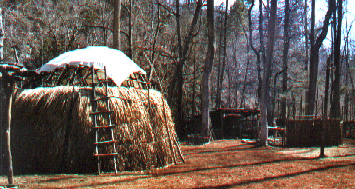 speakers differed from the literate
traditions of the European writers. Into this frontier of the imagination, beyond
the pale of written words, there grew up a strong belief among the literate
that they ventured into wildness when traveling to the frontier. Instead of
the familiar Eurasian frontiers where customs officials checked traveler's identities,
in America, pilgrims embarked upon an "errand into the wilderness." Confusion
lurked wherever Europeans confronted this quite real but also imaginary dividing
line between distinct ways of living, knowing and order. From this confusion
between belief and experience grew a misplaced sentiment for an imaginary condition
of a landscape in "balance" that has never ecologically existed.
speakers differed from the literate
traditions of the European writers. Into this frontier of the imagination, beyond
the pale of written words, there grew up a strong belief among the literate
that they ventured into wildness when traveling to the frontier. Instead of
the familiar Eurasian frontiers where customs officials checked traveler's identities,
in America, pilgrims embarked upon an "errand into the wilderness." Confusion
lurked wherever Europeans confronted this quite real but also imaginary dividing
line between distinct ways of living, knowing and order. From this confusion
between belief and experience grew a misplaced sentiment for an imaginary condition
of a landscape in "balance" that has never ecologically existed.
The
natural landscape features of North America, so different in size and peculiarity
from Western Europe's natural history, reinforced the belief that this 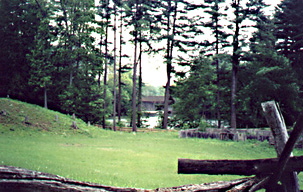 frontier
between Indians and Europeans was a wild place desperately in need of reconnaissance,
surveillance and modification. Nothing could have dispelled this illusion. Dense
forests, enormously wide rivers, endless prairies, rolling plains, tauntingly
high mountains and trackless deserts fed the fear that nature would devour human
endeavors.
frontier
between Indians and Europeans was a wild place desperately in need of reconnaissance,
surveillance and modification. Nothing could have dispelled this illusion. Dense
forests, enormously wide rivers, endless prairies, rolling plains, tauntingly
high mountains and trackless deserts fed the fear that nature would devour human
endeavors.
As Luther Standing Bear, Oglala Lakota Tribal Nation Headman expressed it: "We did not think of the great open plains, the beautiful rolling hills. And winding streams as 'wild.' Only to the white man was nature a 'wilderness.'" As the Indians objected to such a characterization of Turtle Island as a wilderness, so the European commentators insisted on perpetuating the idea of wild, untamed and uninhabited landscapes. In the 1830s Alexis de Tocqueville insisted that "in Europe people talk a great deal about the wilds of America, but the Americans themselves .... march across these wilds, draining swamps, turning the course of rivers, peopling solitudes, and subduing nature." Washington Irving, author and American ambassador to Spain observed that "It has been the lot of the unfortunate aborigines of America,... to be doubly wronged by the white men." By that he meant "They have been dispossessed of their hereditary possessions by mercenary and frequently wanton warfare; and their characters have been traduced by bigoted and interested writers."
With
a keen insight into the origins of ignoring Indian ideas Irving remarked
"The colonist has often treated them like beasts of the forest." To Irving
"There is something in the character and habits"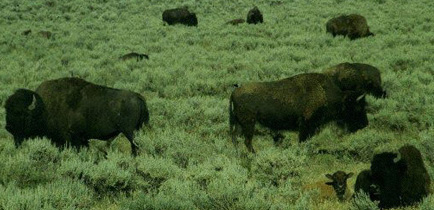 of the Indians when "taken
in connection with the scenery over which he is accustomed to range, its
vast lakes, boundless forests, majestic rivers, and trackless plains ....
He is formed for the wilderness." Thus American attitudes about nature
were born of two very real struggles one against the natural history of
the places settled and the other over the removal of the original inhabitants
because wilderness became defined as the absence of human intrusion, permanent
habitation, or influence. But this idea is misleading. Geographers insist
that "the cumulative impact of the Indian's activities was substantial.
The popular concept that the Indian played a relatively inconspicuous role
in nature's economy is not borne out by the facts."
Important uses of the land by native Americans for raising
crops like corn and their judicious use of fire to manage land influenced
the ecological conditions of the forests and grasslands. Yet their removal
altered this complex indigenous ecology and also meant the eradication
of the idea that the frontier was not wild.
of the Indians when "taken
in connection with the scenery over which he is accustomed to range, its
vast lakes, boundless forests, majestic rivers, and trackless plains ....
He is formed for the wilderness." Thus American attitudes about nature
were born of two very real struggles one against the natural history of
the places settled and the other over the removal of the original inhabitants
because wilderness became defined as the absence of human intrusion, permanent
habitation, or influence. But this idea is misleading. Geographers insist
that "the cumulative impact of the Indian's activities was substantial.
The popular concept that the Indian played a relatively inconspicuous role
in nature's economy is not borne out by the facts."
Important uses of the land by native Americans for raising
crops like corn and their judicious use of fire to manage land influenced
the ecological conditions of the forests and grasslands. Yet their removal
altered this complex indigenous ecology and also meant the eradication
of the idea that the frontier was not wild. 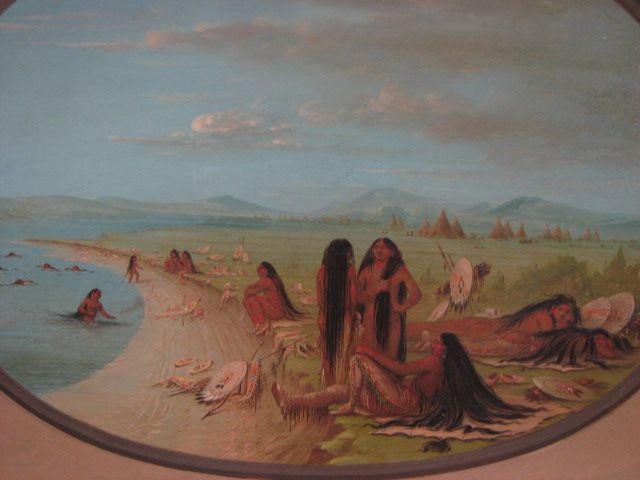 Despite this native impact
on the landscape, George Catlin a nineteenth century painter of Indians
and sympathetic Nature's works which are destined to fall
before the deadly ax and desolating hands of cultivating man." From his
sincere concern for the encroachment of American civilization on the Indians,
Catlin articulated a need to preserve this condition of their existence.
In 1832 he suggested the government create "A Nation's Park, containing
man and beast, in all the wild and freshness of their nature's beauty."
Out of these struggles, for whatever motives, the concept of wild people
inhabiting wild lands became part of the folklore, stories and even great
literature of the American people. Catlin's painting of these Crow bathers in the upper Missouri River gives an indication of the conditions existing among aboriginal inhabitants of the high plains before the devastating smallpox epidemic of the 1830s reduced the population of the region.
Despite this native impact
on the landscape, George Catlin a nineteenth century painter of Indians
and sympathetic Nature's works which are destined to fall
before the deadly ax and desolating hands of cultivating man." From his
sincere concern for the encroachment of American civilization on the Indians,
Catlin articulated a need to preserve this condition of their existence.
In 1832 he suggested the government create "A Nation's Park, containing
man and beast, in all the wild and freshness of their nature's beauty."
Out of these struggles, for whatever motives, the concept of wild people
inhabiting wild lands became part of the folklore, stories and even great
literature of the American people. Catlin's painting of these Crow bathers in the upper Missouri River gives an indication of the conditions existing among aboriginal inhabitants of the high plains before the devastating smallpox epidemic of the 1830s reduced the population of the region.
Carved out of the wilderness – the crucible of our democratic
experience – American civilization is for many writers different from other
nation building exercises because the taming of the land also harnessed
our cultural, legal and moral relations to a mythology of the wild frontier.
Writing sixty years after historian Frederick Jackson Turner called attention
to the close of the frontier, Aldo Leopold, an influential wildlife biologist,
in 1948, professed "I am glad I shall never be young without wild country
to be young in." He then asked "Of what avail are forty freedoms without
a blank spot on the map?" As a myth of our origins the ideal of wilderness
forms a resistant stratum of our national identity as Henry David Thoreau
evocatively wrote, "The West of which I speak is but another name for the
Wild;....How near to good is what is Wild." For Thoreau, the "west" began even east of the Hudson River!
Illusions are important because they reveal the motives, beliefs, and values of the people harboring follies based on factual errors. "Upon close scrutiny, the simple popular idea of wilderness dissolves before one's gaze," writes Philosopher J. Baird Callicott. "Upon the eve of European landfall, most of temperate North America was not,... in a wilderness condition -- not undominated by the works of man."
Persistent errors are like stubborn people who demand
accommodation at whatever the cost. They cloud our judgment even today
when we call people indigenous to the America's: "Indians," or refer to the
landscape as: "virgin," or refer to the frontier as the location of "free
land."
These are the words of literate people that give us pause to question
their meaning. What exactly is wild and what is the importance of this
delusion in contemporary ideas about conserving nature? Thoreau explained
that "Life consists with wildness. The most alive is wildest." By that
he meant wild as "Not yet subdued to man, its presence refreshes him."
In the geography of our imagination lies clues to our failures to fully
comprehend our mistakes, to correct our miscalculations, and to learn from
our misjudgments.
This history then is about the tension between what we think
as opposed to what the actual landscape reveals about Americas physical conditions,
biological wealth and preliterate cultural knowledge. For example, John G. Mitchell,
National Geographic's Assistant Editor, like many people today believe that
"Wilderness is an idea. It is an idea at once personal and worldly -- as personal
as risk and freedom and solitude and spiritual refreshment, as 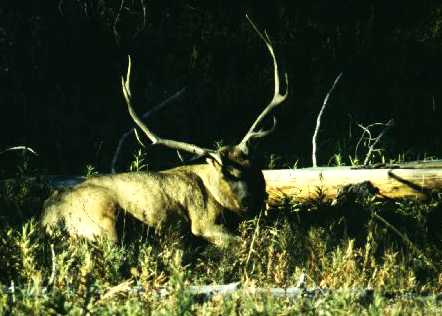 worldly as the
living earth and waters define it." America as nature's nation was a civilization
that Europeans carved out of the wilderness of the Americas.
worldly as the
living earth and waters define it." America as nature's nation was a civilization
that Europeans carved out of the wilderness of the Americas.
Many attributes of Americans from our optimism, to a belief in divine destiny, to our professing a new moral order and our emphasis on pragmatism can be traced -- in some way -- to the existence of a wild frontier, settled by fearless pioneers. Along with this naive assumption comes a narrative of wilderness in which abundant land and resources became American's for the taking. This belief about the land as filled with inexhaustible resources and ample room to grow became an article of faith in America's commitment to democracy, commerce and technological innovation. In some respects Puritan concepts of mission were coupled to "Yankee ingenuity" and a faith in a classless society as articles of a bold American creed. This faith was literally and figuratively grounded in the existence of free land on the wild frontier. As environmentally sensitive writer Terry Tempest Williams reminds us, "If you know wilderness in the way that you know love, you will be unwilling to let it go. We are talking about the body of the beloved, not real estate." Another defender of wilderness says "The point is that wilderness appreciation has been a creed, a faith, something you felt in your bones, something that was only sullied by our analysis and explication."
According
to Roderick Nash, wilderness historian and popular author, "Development and
the preservation of wilderness are not compatible." He argues that "Today's
appreciation of wilderness represents one of the most remarkable intellectual
revolutions in the history of human thought about land." With utmost sincerity
"Wilderness has evolved from an earthly hell to a peaceful sanctuary where happy
visitors can join John Muir and John Denver in drawing near divinity," suggests
Nash. A simplistic connection was made between the very soil and the goodness
of the civilization engendered by agriculture and today by extension to the
sanctity of wilder landscapes. Nash speaks for many who believe "wilderness . . . . It's
out biological and cultural mother." With respect to modern preservation of
ecologically rare and endangered lands, Nash advocates "There is a need for
the articulation of wilderness values based on historical fact, contemporary
experience and the projected future needs of human life." Like many Nash believes
that "Wilderness is" significant because it is at once a "biological safe-deposit
box" harboring "normal ecological and evolutionary processes" and that "Wilderness
is the best place to learn humility, dependency and reverence for all life."
This crucial relation between soil and society must be analyzed to better comprehend the tensions inherent in American cultural identity. To post modern critics these ideas we associate with the colonial and recent past's mythical narratives are misleading. Philosopher of land, Callicott concludes that "American Indian complaints that the very concept of wilderness is a racist idea." lies at the root of our failure to "envision ways of creatively reintegrating man and nature." Today in the US this attitude accounts for why Native Tribal Nation's are absent from most national parks and instead are sequestered on "reservations." However in South America, Canada and Alaska national parks are being created that attempt to assure the continuing access of native peoples to their traditional sources of spiritual, economic and social customs. If critics are correct do ethnocentric visions of wild areas hamper this integration of the indigenous people and the endemic wildlife into one ecologically resilient enclosure? In respect to the notions of disturbance and natural abundance arising from an ecological balance there is certainly confusion. Consider the historic case of the wild sea turtles and Bermuda fisherman just after settlement there by Englishmen and compare that to a recent debate in Connecticut about the future of a very old pine forest.
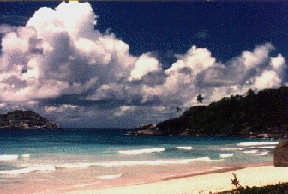 In
1620, the Bermuda Assembly passed a law that reveals an important clue
to colonial conditions and the mistakes that required legal sanctions.
This is because the Bermuda Assembly, a representative body, passed an
"act against the killings of our young tortoises." With respect to sea
turtles the law forbid the catch of turtles whose shell (carapace) measured
18 inches or less in diameter. Clearly this very early conservation provision
was passed in response to an observable decline in the numbers of these
creatures (Chelonia sp.). The measure passed because, as the act reads
there was "much decay of the breed of so excellent a fishe." Furthermore
the act's authors feared "the danger of an utter destroying and loss of
them." Were turtles so important and then so scarce by 1620 that the penalty
for killing young specimens was a fine of 15 pounds of tobacco? And was
the Assembly so interested in the enforcement of this provision that 7.5
pounds of the this confiscated tobacco would be given to the informants?
Apparently so. If this is a correct reading of the law, then the notion
of America as a land of plenty where abundant plants and animals could
be had for the taking should be reevaluated in light of scarcity.
In
1620, the Bermuda Assembly passed a law that reveals an important clue
to colonial conditions and the mistakes that required legal sanctions.
This is because the Bermuda Assembly, a representative body, passed an
"act against the killings of our young tortoises." With respect to sea
turtles the law forbid the catch of turtles whose shell (carapace) measured
18 inches or less in diameter. Clearly this very early conservation provision
was passed in response to an observable decline in the numbers of these
creatures (Chelonia sp.). The measure passed because, as the act reads
there was "much decay of the breed of so excellent a fishe." Furthermore
the act's authors feared "the danger of an utter destroying and loss of
them." Were turtles so important and then so scarce by 1620 that the penalty
for killing young specimens was a fine of 15 pounds of tobacco? And was
the Assembly so interested in the enforcement of this provision that 7.5
pounds of the this confiscated tobacco would be given to the informants?
Apparently so. If this is a correct reading of the law, then the notion
of America as a land of plenty where abundant plants and animals could
be had for the taking should be reevaluated in light of scarcity.
 Clearly
from the perspective of people inhabiting the innumerable small islands
that formed the initial frontier of European occupation the continent's
natural flora and fauna would appear inexhaustible. But the idea that sea
turtles would be taken in such quantities as to raise real fears of their
local demise, in 1620, is also disturbing. Granted that Bermuda is at the
northern extremity of the Gulf Stream's warming influences and that as
a margin of turtle ranges in the Atlantic their demise might be due to
natural and not strictly human causes. Nagging doubts remain about why
this protection became necessary if a wild condition implies an abundance
of resources.
Clearly
from the perspective of people inhabiting the innumerable small islands
that formed the initial frontier of European occupation the continent's
natural flora and fauna would appear inexhaustible. But the idea that sea
turtles would be taken in such quantities as to raise real fears of their
local demise, in 1620, is also disturbing. Granted that Bermuda is at the
northern extremity of the Gulf Stream's warming influences and that as
a margin of turtle ranges in the Atlantic their demise might be due to
natural and not strictly human causes. Nagging doubts remain about why
this protection became necessary if a wild condition implies an abundance
of resources.
From the perspective of the sea, there is little doubt in the mind of the preeminent naturalist, Archie Carr, that marine turtles are what lured the Spanish into the Caribbean and sustained their occupation of the West Indies between 1490 and 1590. The allure of sea turtles lies in their biology, life cycle and edible meat. A rich source of protein that swims in the seas along mighty ocean gyres of the Atlantic and Pacific, turtles are caught easily, can be kept on deck for months as a sources of fresh meat and may be followed in nesting season to island or mainland beaches where they lay their eggs on or near the sand dunes. In many ways the doorway to North America rests astride the Caribbean Sea and the turtles are seagoing sentinels foretelling the existence of land beyond the horizon. As pilot lights to these strange and distant shores turtles remind us that the paths of history and natural history cross early and provocatively in the dawn of European colonization.
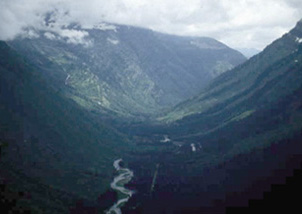 Ecologically
speaking the idea of abundance is a rare natural extravagance, followed by an
abrupt decline in the species and a return to equilibrium conditions. Frequently when a change in land-use happens disturbance is a consequence of pioneering species that accompany such alterations. Disturbance
frequently causes the spread of certain early stage species of grasses or shrubs
or trees, for example, out of all proportion to what the size and extent of
the species would be under more stable conditions. Seed eating birds for example
are beneficiaries of spreading farms. Any seed that could exist say from corn
would prosper as American settlers moved west. Since corn was the staple of
native American farmers the population of these birds would have been high only
to expand dramatically as the density of farms lead to a clearing of the forests.
Natives also burnt vast areas on a regular pattern. Some areas were repeatedly
burned to collect seeds from oak tress, where as other areas for ceremonial
purposes were burned infrequently if not at all. Ecologically speaking the abundance
associated by early travelers and settlers of North America was a consequence
of the very peopling of the frontier by small farmers.
Ecologically
speaking the idea of abundance is a rare natural extravagance, followed by an
abrupt decline in the species and a return to equilibrium conditions. Frequently when a change in land-use happens disturbance is a consequence of pioneering species that accompany such alterations. Disturbance
frequently causes the spread of certain early stage species of grasses or shrubs
or trees, for example, out of all proportion to what the size and extent of
the species would be under more stable conditions. Seed eating birds for example
are beneficiaries of spreading farms. Any seed that could exist say from corn
would prosper as American settlers moved west. Since corn was the staple of
native American farmers the population of these birds would have been high only
to expand dramatically as the density of farms lead to a clearing of the forests.
Natives also burnt vast areas on a regular pattern. Some areas were repeatedly
burned to collect seeds from oak tress, where as other areas for ceremonial
purposes were burned infrequently if not at all. Ecologically speaking the abundance
associated by early travelers and settlers of North America was a consequence
of the very peopling of the frontier by small farmers.
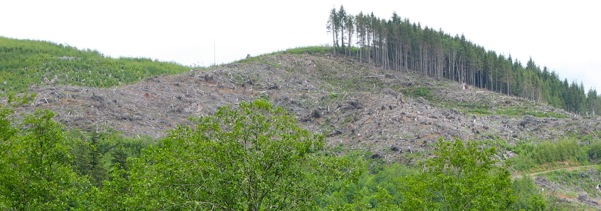 In
a small New England town a White Pine forest, not logged since the 1830s,
was recently destroyed by a tornado which led to a dispute in the town
meetings about the future of the woodland. The case is used by magazine
editor and author Michael Pollan as an example of the failure of the wilderness
metaphor to assist us in choosing the correct resource policies.
In
a small New England town a White Pine forest, not logged since the 1830s,
was recently destroyed by a tornado which led to a dispute in the town
meetings about the future of the woodland. The case is used by magazine
editor and author Michael Pollan as an example of the failure of the wilderness
metaphor to assist us in choosing the correct resource policies.
He argues that "our idea of wilderness had become part of the problem" here: because "This forty-two acre forest of old-growth white pine trees close to the center of town... was one of the oldest stands of white pine in New England ...untouched since about 1800." Pollan in searching for a way out of the debate between wilderness preservationists and utilitarian developers says "I also began to wonder if it might be possible to formulate a different ethic to guide us in our dealings with nature... an ethic that would be based not on the idea of a wilderness but on the idea of a garden." He concluded from the dispute that "The cathedral pines are not, then, 'virgin growth.'" The town had passed, in 1883, an ordinance "… to protect the trees from the threat of logging" but Pollan admits "Cathedral pines is not in any meaningful sense a wilderness." That was because these woods were not original growth timber. Also fires, used extensively by native peoples to enhance soil fertility had not been allowed to burn this forest. Pollan believes that "Fire suppression is one of the more significant effects that the European has had on the American landscape."
For many preservationists today common ground is emerging between Indigenous approaches to conservation and effective resource protection. Yet there is a wide gulf among some preservationists and Native or First Nations' peoples over resource extraction. One reason wilderness did not exist for native Americans is that the sources of materials for their culture were derived from a variety of trees, shrubs, herbs and animals. For the indigenous inhabitant the landscape is a super market or an emporium of life's necessities to be cultivated, learned from, and experienced for what it might teach about survival, justice and consequences. When Amerindians object to the term of wildness it is because the land they managed was a perpetual source of social, economic and spiritual renewal. Indigenous peoples care for what is necessary just as the farmer cares for the success of her crop. In the desert regions of California natives practiced irrigation by diverting seasonally flooded canals to water grassy areas so that they might grow a reedy grass from whose rhizomes, or roots, they crafted the frames of their cooking baskets. Anthropologists distinguish gatherers from agriculturists but these survivors of the arid regions blur that sharp distinction.
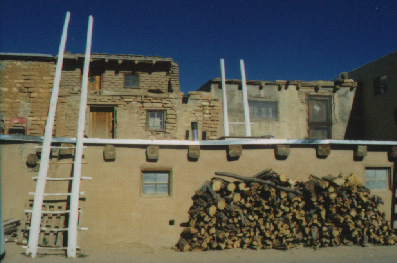 Amerindians
also reveal the level and quality of care exercised by these inhabitants of
the wild frontier. These Pueblo peoples thrived agriculturally in the harshest
of areas of the desert southwest because of the care they gave their corn, beans
and squash even though it only rains less than 10 inches per annum. Like all
agricultural peoples, the natives who saw no wilderness in the wild frontier
of the settlers were at the mercy of the climate, weather, and fickle winds.
Prolonged drought drove the Anasazi from their enormously intricate cliff dwellings
in the Thirteenth century. They perished like the plants and animals in the
dry wind because of the tenuous relation between people and water. This intimacy of water and landscape is physically
true even on allegedly "free land," that settlers appropriated under the mistaken impression that the land made vacant by European diseases, drought, or war was therefore pioneers for the taking.
Amerindians
also reveal the level and quality of care exercised by these inhabitants of
the wild frontier. These Pueblo peoples thrived agriculturally in the harshest
of areas of the desert southwest because of the care they gave their corn, beans
and squash even though it only rains less than 10 inches per annum. Like all
agricultural peoples, the natives who saw no wilderness in the wild frontier
of the settlers were at the mercy of the climate, weather, and fickle winds.
Prolonged drought drove the Anasazi from their enormously intricate cliff dwellings
in the Thirteenth century. They perished like the plants and animals in the
dry wind because of the tenuous relation between people and water. This intimacy of water and landscape is physically
true even on allegedly "free land," that settlers appropriated under the mistaken impression that the land made vacant by European diseases, drought, or war was therefore pioneers for the taking.
Such a close relation as revealed in the gathering of materials and weaving of California native basketry between nature and artifice is as it ought to be. Ecology and history fold neatly together to form a complex relation between natural objects and cultural designations. History as a literate pursuit to explain our origins and development is embedded in the natural history (ecology) of places where people depend on their surroundings for their survival, wealth and civilization. In this perspective the wild frontier is a cultural icon embroidered by our experience that also offers clues to how humans utilize nature to make sense of their experience, craft their material culture and leave behind traces of their occupation. Among the Arawak descendants of cultures indigenous to the America's in 1499, places are named according to the kinds of trees growing about their settled areas. The naming conveys the importance of what we would declare a "natural resource" worth protecting for future generations inhabiting these coastal rainforests. Far from our notion of wilderness these places are not so for indigenous inhabitants but remain wild in our imaginations due to our unfamiliarity with the landscape. Contemporary Arawak people of Guyana know the lay of their land, the shape of its waters and the variety of its fruits. They once hunted turtles; now they protect them from harm or loss.
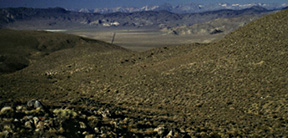 Despite
the reality of the arid regions Americans persisted in believing in myths about
the wild frontier as a garden in the grasslands. The ability of the nation to
persist in fabricating more convincing fantasies about the frontier than it
created believable descriptions is a disturbing truth about the American fascination
with natural areas and the wide open spaces of North America. While the tangible
forests, rivers, swamps, glaciers and deserts of the continent gave rise to
obstacles and opportunities, Americans have always measured their achievements,
in part, with respect to the conquest of the land, the harnessing of its waters
and the subduing of its resources. In the process of dismembering the fabric
of life that was the environment, the commentators created a myth of nature's
nation.
Despite
the reality of the arid regions Americans persisted in believing in myths about
the wild frontier as a garden in the grasslands. The ability of the nation to
persist in fabricating more convincing fantasies about the frontier than it
created believable descriptions is a disturbing truth about the American fascination
with natural areas and the wide open spaces of North America. While the tangible
forests, rivers, swamps, glaciers and deserts of the continent gave rise to
obstacles and opportunities, Americans have always measured their achievements,
in part, with respect to the conquest of the land, the harnessing of its waters
and the subduing of its resources. In the process of dismembering the fabric
of life that was the environment, the commentators created a myth of nature's
nation.
The wildness of this vast continent gave rise to myths about our origins and also records the fallacies with respect to resources that still separate opposing sides in an ongoing national debate about how best to utilize natural resources. Consider this spectrum of three related words:
Spectrum Associated ideas about appropriate places
| wild | garden | urban |
| untamed | plot of tilled earth | city as civilized |
| state of nature | soil as a source | cosmopolitan |
| evil | edenic myth | centralization |
| biotic order | domestication | uniformity |
| virtue | agriculture | public space |
| disorderly | divinely ordered | civic order |
Table 1
These three related concepts convey very different images of the appropriate origin and continuing locus of virtue in American cultural life: the wild, the garden, or the urban setting. Could all of these places have influenced the development of American ideals? Most certainly. These competing visions have influenced one another and bred an ingrained contradiction at the heart of the national experience that is confusing to ourselves and foreigners alike. Because American culture lacks a sense of longevity over time, we as a nation in search of a distinct cultural identity have seized on the myth of wilderness to explain our origins, attitudes and destiny.
Our stories, literature and politics have projected this myth on the world at large. How else can we explain that, on average, Americans have an impact on the planet thirteen times greater than a Brazilian person's impact on resources? The parochial insularity of American culture, our hostility to other languages and our self centered approach to foreign relations all can be understood -- in part -- by our myth of the wild frontier. Perpetuated by Hollywood westerns and now space odysseys the myth of the wild needs to be revised. For behind the myth is an almost adolescent preoccupation with fantasy, fictional heroism, and imaginary enemies. As this myth's power fades what will replace it?
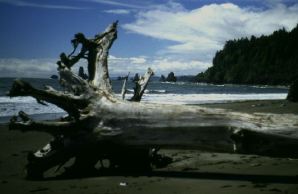 John
Winthrop, when founding Boston in the 1620s, thought of this settlement
as a new Jerusalem set "As a city upon a hill" spreading a holy light in
a dark, hostile land. Americans still consider their landscape's legacy
as an exemplary beacon to others. Today the light metaphor stands for the
democratic values, commercial freedom and personal liberties associated
with the hill top city. But environmentally speaking national parks and
wildlife refuges are also "shining examples" for the world of American
optimism in the power of people to alter their personal and collective
destiny. Current ecotourism capitalizes on our commercial desire to see
natural areas. The ambivalence arises from the fact that these twin impulses
for the sanctity of private property and the protection for ecologically
rare yet necessary landscape are viewed as opposites when in reality this
is not so. Ecological integrity, meaning the proper functioning of a natural
area, is at the foundation of a long-term, healthy economy. Obscuring this
reality is the complexity of scientific thinking and the persistently widespread
faith in manifest destiny. Particularly in times of rapid change creating
economic uncertainty societies have a tendency to hold fast to outdated
ideas.
John
Winthrop, when founding Boston in the 1620s, thought of this settlement
as a new Jerusalem set "As a city upon a hill" spreading a holy light in
a dark, hostile land. Americans still consider their landscape's legacy
as an exemplary beacon to others. Today the light metaphor stands for the
democratic values, commercial freedom and personal liberties associated
with the hill top city. But environmentally speaking national parks and
wildlife refuges are also "shining examples" for the world of American
optimism in the power of people to alter their personal and collective
destiny. Current ecotourism capitalizes on our commercial desire to see
natural areas. The ambivalence arises from the fact that these twin impulses
for the sanctity of private property and the protection for ecologically
rare yet necessary landscape are viewed as opposites when in reality this
is not so. Ecological integrity, meaning the proper functioning of a natural
area, is at the foundation of a long-term, healthy economy. Obscuring this
reality is the complexity of scientific thinking and the persistently widespread
faith in manifest destiny. Particularly in times of rapid change creating
economic uncertainty societies have a tendency to hold fast to outdated
ideas.
| The past is often a refuge for those who fear the future. Arguments today over the proper historical narrative to effectively interpret our heritage is a sign that illusions prevail over good sense. The tension between images of "a city upon a hill" and howling wilderness, filled with wild beasts and wild men has formed a dichotomy generating American cultural confusion about how we envision ourselves in respect to natural resources. | 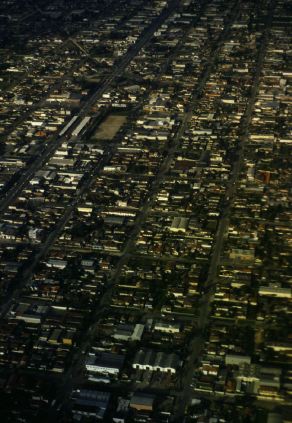 |
|
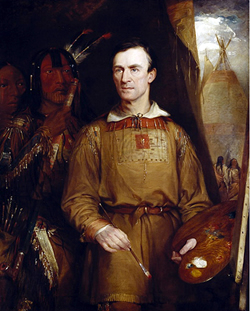 |
Our search for identity led to a widely accepted myth: the wild frontier of boundless resources as a dominant narrative of human adaptation to the land. We do well to recall that "The land was ours before we were the lands," as poet Robert Frost reminds us. So American's have yet to find a decent metaphor to preserve and protect the variety of 231 distinct ecological associations that characterize the American landscape.
|
|
| Today many thinkers are beginning to realize what businessman and author Paul Hawken asserts when he writes that "Nationally and globally, we perceive social and environmental decay as distinct and unconnected. In fact, a humbling design flaw links the two problems." By that he warns us "industrialism is extraordinarily inefficient." We are late to recognize that truth because siren like the wild frontier myth still beckons Americans on our odyssey of self-discovery while shrouded in a pervasive delusion. We are no more a special people than the original occupants, or the Chinese who thought themselves the center of the world. As part of our childish ethnocentric burden such exceptionalism fosters the myth of a boundless frontier calling on us to civilize the unanointed. If we instead embrace the world and its inhabitants as siblings in a quest for enduring partnership, we may learn the lasting lesson of the frontier. For beyond, beneath, and behind the facade of "free land" lies an opportunity for us to restore natural areas in order to preserve and protect the creatures and their environs upon which we and all the world depend for our future well being. | ||
Haudenosaunee League, comprised of the traditional leadership of the Seneca, Cayuga, Onondaga, Oneida, Mohawk and Tuscarora First Nations.
The Choctaw dance before a Lacrosse game, Oklahoma, 1834. Newberry Library
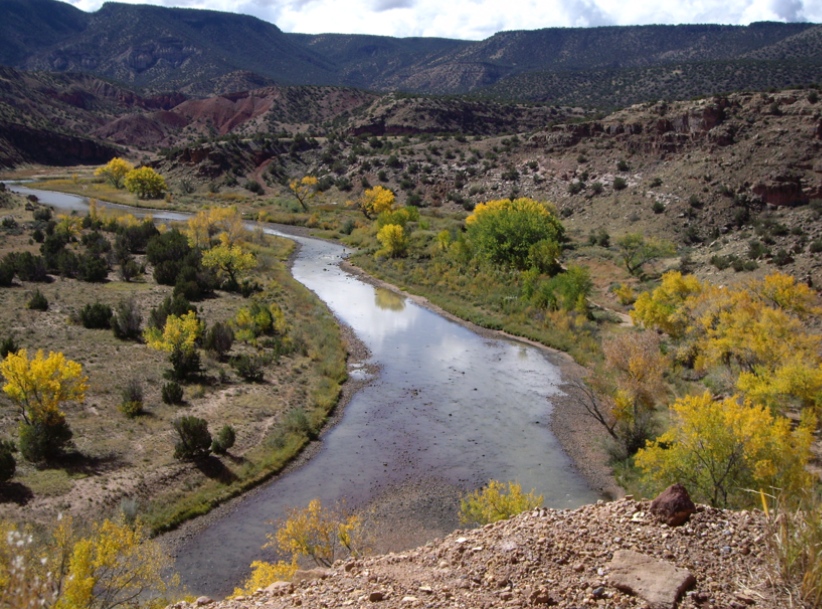
Champa River Valley, Northern New Mexico.
Environmental
History | Map | Website
Science Index | Site Analysis | Population Index | Global Warming Index | Nature Index
Vocabulary | Terms | Glossary | Word webs | Basic vocabulary | Advanced Vocabulary | Antonyms | Synonyms
Writing | Interviews | Free Writing